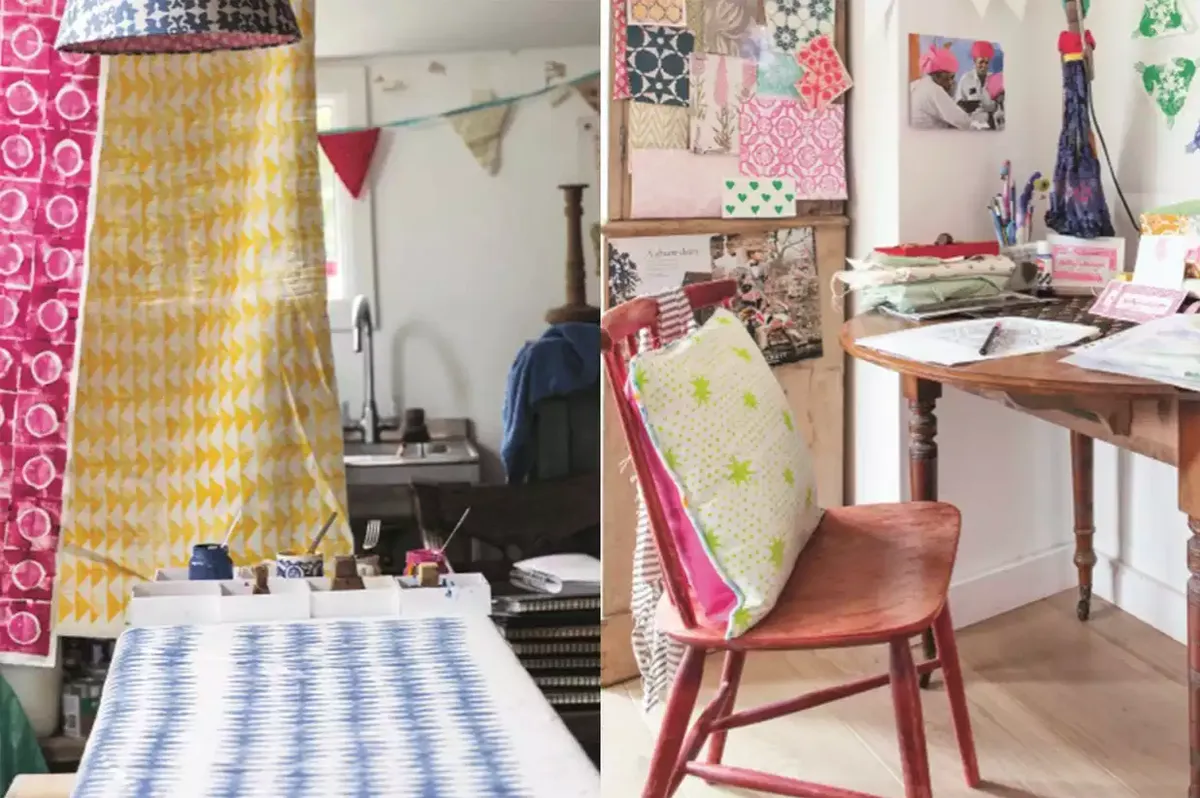For Molly Mahon, creativity runs in the family.
Her mother is a published artist and, following in her footsteps, Molly is an award winning fabric designer. She now resides in Sussex but takes inspiration from India's Jaipur, a city which is renowned for its artisan printers.
We caught up with her to talk all things interiors...
What do you enjoy about block printing?
I find it completely therapeutic. I get totally lost in the moment and don’t hear anything else. I can keep printing for hours. And even if the block is a bit off, it doesn’t matter because that is the charm.
How did you start out?
It was a hobby to start off with. When we moved to the countryside, I did a local workshop and I loved it from the off. I ended up working for them and meanwhile started to carve my own designs into lino at home. I was never thinking about anything commercial. Then a girlfriend asked me to make some wallpaper for her and I realised I could actually make a bit of money out of doing something I loved.
Not having trained in textiles, I had no idea about the technical side, but as orders increased, I realised digital printing was the way forward; not only was it the most effective way of reproducing that look but because you can do small runs.

How did you move up to the next level?
I had always loved the textile emporium Tissus d’Helene in London, so I spoke to the owner – a lovely lady called Helen Cormack – about what I was doing. I never expected her to take any of my fabrics. I only wanted her advice. But she took the lot: I had 12 different designs in 12 colours at the time. It gave me a huge confidence boost and then amazing interior designers – like Todhunter Earle and Kit Kemp – started to use my designs.
What inspires you?
The East Sussex home of Bloomsbury Group artists Vanessa Bell and Duncan Grant, nearby Charleston House, is amazing. They painted everything and decorated in a very mismatch way. I also love my regular trips to Jaipur, where they paint everything. You will never have a plain wall in India even along the roads.
Everything is decorated, which I find really refreshing especially coming from England where people instinctively would never put a patterned wallpaper next to a mismatching design – but I love that.
How does the process work in Jaipur?
The key to its success is the doyenne of block printing Gitto and her brother Amitabh, who has been as much a mentor as our producer. The majority of printers in Jaipur however, are men, and they have to be physically fit to print all day.
Using hand-carved blocks measuring about 20cm sq, they work across the fabric from left to right on tables that measure either 5m or 12m. Depending on the dye used, the fabric will then either be steamed in a machine or left out to dry on big sandy fields that have specifically been put aside for this purpose.
Do you think there has been a revival in the block printing trend?
I do. I notice Nina Campbell has just done some lovely block printing designs and Christopher Farr has launched some exquisite Barron and Larcher designs. There is a renewed interest in artist and designer Peggy Angus, and a constant appetite for the work of Marthe Armitage - the wallpaper designer. She doesn’t so much block print as use lino prints but she has given me great advice. People are loving colour again and putting wallpaper back up on their walls.
Did you grow up in an arty family?
Totally. My mother Celia Lewis is an artist and I grew up painting and doing all sorts of artsy things. My mother studied with Signorina Simi in Florence and has published beautifully illustrated books of her work. She was always upholstering pieces of furniture, marbling or doing water colours. My grandmother before her was just the same.
Your work sounds very life-affirming!
My work brings me so much joy. From the colours and designs to the people I meet in my work and that sense of excitement I get when I am printing – the feel-good factor is immense. My work is my life and my life is my work. It is the perfect mix.
Words by Susan Springate
